The Isles of Scilly
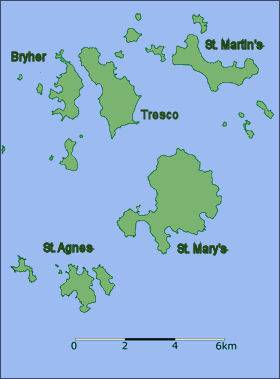
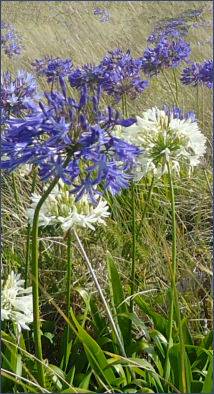 Outstandingly beautiful, uncrowded and unspoilt, the Isles of Scilly are an archipelago off the southwestern tip of the Cornish peninsula.
Outstandingly beautiful, uncrowded and unspoilt, the Isles of Scilly are an archipelago off the southwestern tip of the Cornish peninsula.
There are five inhabited islands and numerous other small rocky islets, totalling around 140 in all.
The islands are situated 45 km (28 miles) off Land's End and, lying in the path of the Gulf Stream, are known for their exceptionally mild climate and countless sparkling white beaches, they provide a haven for many types of flora and fauna. Scilly enjoys a sub-tropical climate, in winter temperatures are similar to the south of France and even at the winter equinox many plants will still be in flower.
Known in Cornish as Syllan or Enesek Syllan, the islands have been inhabited since prehistoric times, a surviving description from Roman times, describes Scilly as "Scillonia insula", in the singular, indicating they were then one island or there was an island much larger than any of the others. At low tide, when the waters recede, ancient field walls running into the sea are revealed.
St. Mary's is the largest island, and home to about three quarters of the population of Scilly. Its capital, Hugh Town is the main settlement on Scilly. Hugh Town main street is the main shopping area on the islands and business is reliant on tourism. Known in Cornish as Tre Huw, the town lies on a narrow isthmus which joins the peninsula known as the Garrison with the rest of the island. The main street is the main shopping area on the islands and business is reliant on tourism. There are are several beaches, banks, hotels, pubs and a small hospital. Evidence of St Mary's long past can be seen in many of the historic buildings on the island, from Neolithic chamber tombs to Civil War fortifications.
There is evidence of extensive settlement on the Isles of Scilly from around 2500 BC. At that time the sea level was lower and much of Scilly formed a single landmass. Bant's Carn, an entrance grave dating from the Bronze Age is situated on the island of St Mary's and an Iron Age/Romano-British village at Halangy Down. Excavations of the site took place in the 1950s and revealed a complex of 11 inter-connecting stone-built houses, many of them simple oval structures which probably had a conical thatched roof. Stone-lined drains, hearths and cupboards constructed from the thickness of the walls were uncovered.
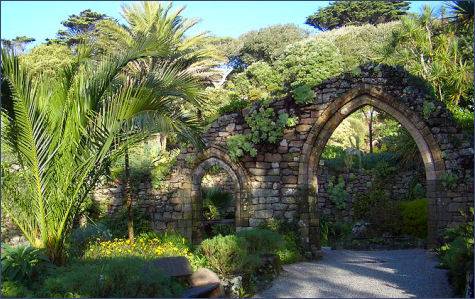 Harry's Walls, the remains of an unfinished artillery castle, are situated on a hilltop to the north-east of Hugh Town. The fort was constructed in 1551 as part of a major phase of fortification on the Islands, designed to counter threats from the French. It was left unfinished because the site was recognised to be unsuitable.
Harry's Walls, the remains of an unfinished artillery castle, are situated on a hilltop to the north-east of Hugh Town. The fort was constructed in 1551 as part of a major phase of fortification on the Islands, designed to counter threats from the French. It was left unfinished because the site was recognised to be unsuitable.
Star Castle is at the centre of a fortification system around the west side of St Mary's known locally as the Garrison. The walls of the castle take the shape of an eight-pointed star. The Star Castle was constructed in the reign of Queen Elizabeth I, following the Spanish Armada of 1588.
The Coastguard's Lookout Tower is also known as the Telegraph Tower. It was used by Radio Scilly for broadcasting. Dating from 1803, it was one of three gun towers built on St Mary's. It was at this tower about 1898 that Guglielmo Marconi heard wireless signals transmitted from Porthcurno, a distance of 30 miles.
The second largest island is Tresco, known in Cornish as Enys Skaw. History and Legend are deeply rooted in the island's culture. Legend states that Tresco was the legendary 'Lyonesse' or 'land across the sea' the final resting-place of King Arthur.
A variety of scenery is to be seen on the island, including rugged granite outcrops, heathland of the exposed north coast and mainly shell beaches in the east and south. The island is edged with sand dunes, whose marram grass covered moulds are enhanced by a profusion of wild African agapanthus flowers.
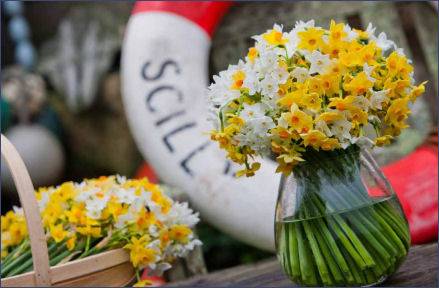 King Charles's Castle (pictured below left) on Tresco dates from 1550-54, and was occupied by the Royalists during the Civil War. It was later partially demolished to provide the building materials for Cromwell's Castle, a coastal tower, which was built 1651-52. The site is now in the care of English Heritage and is open to visitors.
King Charles's Castle (pictured below left) on Tresco dates from 1550-54, and was occupied by the Royalists during the Civil War. It was later partially demolished to provide the building materials for Cromwell's Castle, a coastal tower, which was built 1651-52. The site is now in the care of English Heritage and is open to visitors.
Oliver's Battery, on the south of the island, by the Carn Near quay,was erected shortly after the capture of Tresco by Parliamentary forces in the Civil War. It was built by Admiral Robert Blake.
The famous sub-tropical Tresco Abbey Garden (above left) has been described as a perennial Kew without the glass, it shrugs off salt spray and Atlantic gales to host myriad exotic plants, many of which would stand no chance of survival even on the Cornish mainland less than 30 miles away. Tresco Abbey Garden was established by the nineteenth century by Augustus Smith, who had taken over the lease of the Isles of Scilly from the Duchy of Cornwall. It was originally a private garden within the grounds of his home. The garden also contains a collection of shipwrecked figureheads, which are displayed at the Valhalla Museum.
St Martin's is the northernmost populated island it has three main settlements, Higher Town, Middle Town and Lower Town. The island is known for its gorse-covered moorland, flower fields and superb white beaches.
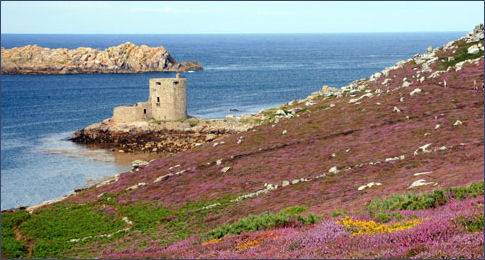 Boat trips are available to the bird and seal colonies on the Eastern Isles, a group of twelve small uninhabited islands including St Helen's, Nor Nour, Great Ganilly, Great, Middle and Little Arthur, which are home to many bird and seal colonies and the distant sight of Land's End offers a dramatic backdrop to Scilly's most easterly inhabited island.
Boat trips are available to the bird and seal colonies on the Eastern Isles, a group of twelve small uninhabited islands including St Helen's, Nor Nour, Great Ganilly, Great, Middle and Little Arthur, which are home to many bird and seal colonies and the distant sight of Land's End offers a dramatic backdrop to Scilly's most easterly inhabited island.
The Eastern Islands are also home to breeding colonies of eight species of sea bird including three species of gull, as well as the common shag (Phalacrocorax aristotelis), great cormorant (Phalacrocorax carbo), northern fulmar (Fulmarus glacialis), razorbill (Alca torda) and puffin (Fratercula arctica). The Isles have a long period of occupation from the Bronze Age with cairns and entrance graves through to Iron Age field systems and a Roman shrine on Nornour, where 300 Roman brooches,thought to be votive offerings, were discovered.
Bryher, which lies to the west of Tresco, is the smallest of the five inhabited islands with a length of 2 kilometres (1.2 miles), and a maximum width of 1 kilometre (0.62 miles) including Shipman Head, which rises to 42 metres (138 ft) at the northern end of the island. Bryher's coast line is remarkably varied, the infamous Hell Bay, an Atlantic facing cove on Bryher, became a notorious place for shipwrecks in the eighteenth and nineteenth centuries.
The island of St. Agnes joins the island of Gugh by a sandbar, called the Gugh Bar, which is exposed only at low tide. The two islands together have the smallest population of the Scilly archipelago. St. Agnes boasts secluded sandy coves, a seventeenth century lighthouse and impressive views across the Western Rocks.
| Bryher Island | Eastern Islands | Gugh Island | Nornour Island |
| St. Agnes | St. Helen's | St. Martins | St. Mary's |
| Tresco |